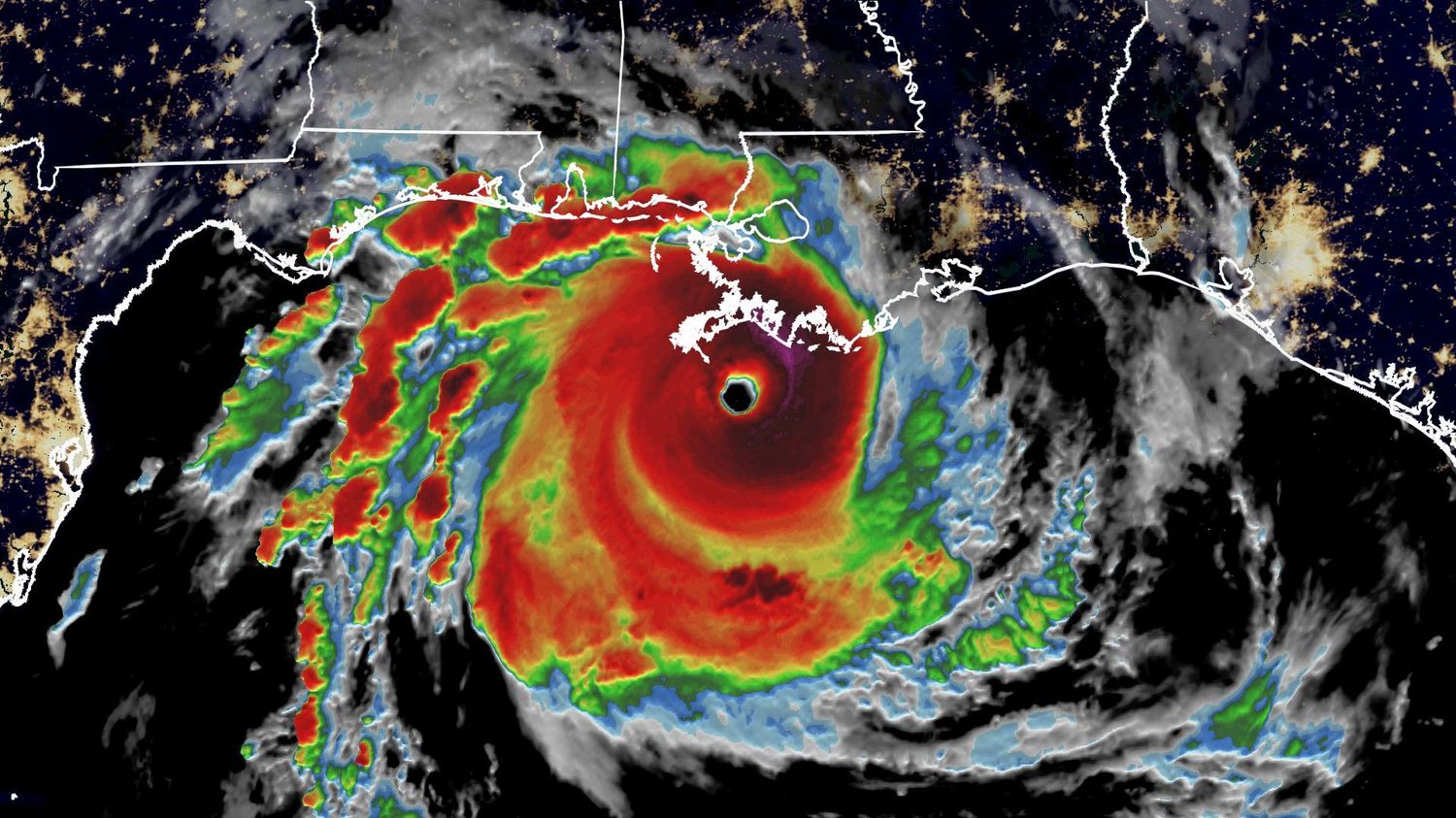
Hurricane Ida was one of the most powerful and destructive storms to hit the United States in recent history. Making landfall on August 29, 2021, near Port Fourchon, Louisiana, it struck exactly 16 years after Hurricane Katrina devastated the same region. Ida rapidly intensified into a Category 4 hurricane with winds reaching 150 mph, causing catastrophic damage and widespread flooding. The storm's impact stretched from the Gulf Coast to the Northeast, resulting in 87 deaths and an estimated $75 billion in property damage. This article delves into 40 key facts about Hurricane Ida, highlighting its formation, path, and lasting effects on the affected regions.
Key Takeaways:
- Hurricane Ida rapidly intensified from a tropical wave to a Category 4 hurricane, causing severe flooding, tornadoes, and significant economic losses. Its impact extended beyond the U.S., affecting Cuba and Venezuela.
- The storm's rapid development and accurate forecasting highlighted the importance of meteorological science. Ida's journey through Cuba and the Gulf of Mexico played a crucial role in its development, impacting multiple regions and adding to its historical significance.
The Birth and Growth of Hurricane Ida
Hurricane Ida's journey from a tropical wave to a Category 4 hurricane was both rapid and intense. Let's explore how this powerful storm developed.
-
Origin and Formation: Hurricane Ida began as a tropical wave in the Caribbean Sea on August 23, 2021.
-
Tropical Depression: By August 26, 2021, the wave had evolved into a tropical depression near Kingston, Jamaica.
-
Tropical Storm: Just six hours later, it intensified into Tropical Storm Ida, with winds reaching at least 40 mph.
-
Rapid Intensification: Over the next three days, Ida's winds surged from 85 mph to 150 mph, showcasing rapid intensification.
Reaching Peak Intensity
Ida's transformation into a Category 4 hurricane was marked by significant milestones and challenges.
-
Category 4 Hurricane: By August 29, 2021, Ida had achieved Category 4 status with winds of 150 mph and a central pressure of 929 millibars (27.4 inHg).
-
Landfall: Ida made landfall near Port Fourchon, Louisiana, exactly 16 years after Hurricane Katrina struck the same region.
-
Wind Speeds: At landfall, Ida's winds matched those of Hurricane Laura (2020) and the Last Island hurricane of 1856, making it one of the strongest to hit Louisiana.
-
Storm Surge: The storm surge led to severe flooding along the Gulf Coast, especially in Grand Isle, Louisiana.
The Devastation Unfolds
As Ida moved inland, it left a trail of destruction, from flash floods to tornadoes.
-
Flash Flooding: Heavy rainfall caused flash flooding across Gulf Coast states like Louisiana and Mississippi.
-
Tornado Outbreak: Ida's remnants triggered tornadoes in the Northeastern U.S., affecting areas along the I-95 corridor from Virginia to New England.
-
Catastrophic Flooding: Record-breaking rainfall in New York City led to catastrophic flooding.
-
Death Toll: Ida claimed 87 lives across nine states, with most deaths occurring after it transitioned to an extratropical cyclone.
Economic Impact
The financial toll of Hurricane Ida was staggering, affecting both property and insurance sectors.
-
Property Damage: The storm caused an estimated $75 billion in property damage from Louisiana to New England.
-
Insurance Losses: Insurance losses ranged between $20 billion and $30 billion, with wind and storm surge losses accounting for $17 billion to $25 billion.
Impact Beyond the U.S.
Ida's reach extended beyond the United States, affecting other countries along its path.
-
Impact on Cuba: Before hitting the U.S., Ida caused significant damage in Cuba, especially on Isla de la Juventud, where many palm trees were downed.
-
Flooding in Venezuela: The tropical wave that became Ida triggered flooding in western Venezuela on August 23, killing 20 people.
Meteorological Insights
Understanding Ida's rapid development and accurate forecasting highlights the importance of meteorological science.
-
Rapid Development: Ida's transformation from a tropical depression to a Category 4 hurricane in three days was one of the most well-forecast storms in recent memory.
-
Forecast Accuracy: The National Hurricane Center's (NHC) forecast track remained within 50 miles of the actual landfall location three days before the storm hit.
-
Storm Structure: Initially asymmetric due to wind shear, Ida's structure improved as it moved through the Cayman Islands and northwestern Cuba.
-
Central Dense Overcast (CDO): The convection organized into a CDO, indicating a well-defined eye and strong updrafts.
Land Interaction and Gulf of Mexico
Ida's journey through Cuba and the Gulf of Mexico played a crucial role in its development.
-
Land Interaction: Crossing Cuba didn't weaken Ida immediately, but dry air entrainment inhibited further intensification.
-
Second Landfall in Cuba: Ida made its second landfall in Cuba at Playa Dayaniguas in Pinar del Río on August 27, with winds of 80 mph and a central pressure of 988 mbar (29.18 inHg).
-
Gulf of Mexico: After emerging over the southeastern Gulf of Mexico, Ida continued to intensify rapidly, peaking as a strong Category 4 hurricane.
Post-Tropical Transition
Ida's impact didn't end with its landfall; its remnants continued to cause havoc.
-
Post-Tropical Cyclone: On September 1, 2021, Ida transitioned into a post-tropical cyclone, breaking multiple rainfall records in the Northeast.
-
Remnants in the Gulf of St. Lawrence: Ida's remnants stalled in the Gulf of St. Lawrence before being absorbed into another low-pressure area on September 5.
Weather Conditions and Variability
Understanding the weather conditions during Ida helps in assessing the damage and response.
-
Weather Conditions: Hurricane-force winds extended 20-35 miles from the eye, indicating significant wind damage potential.
-
Wind Variability: Weather conditions varied greatly over short distances, crucial for accurate damage assessments.
Forensic Meteorology and Claims
Forensic meteorology plays a vital role in understanding and assessing storm damage.
-
Forensic Meteorology: Experts use various weather records, including Doppler radar imagery and storm surge sensor data, to provide reliable information for each property affected.
-
Claims and Litigation: The insurance industry combines forensic meteorologists and structural engineers during claims to make informed decisions on storm damage lawsuits.
-
Daubert and Frye Standards: Experts providing opinions outside their expertise can be removed from cases under these standards, emphasizing the need for qualified experts.
Site-Specific Analysis
Accurate weather analysis is essential for understanding the specific impact on properties.
-
Site-Specific Weather Reports: Traditional weather records often fail to represent specific incident locations accurately, highlighting the need for site-specific analysis.
-
Historical Weather Studies: Studying past high-wind events and rainstorms helps in understanding similar storms' impact and making informed decisions in claims and litigation.
-
NAVD88 Elevation: Comparing a property's elevation above North American Vertical Datum of 1988 (NAVD88) ensures accurate assessments of storm surge and wave height levels.
Regional Impact and Emergency Response
Ida's impact spanned multiple regions, requiring coordinated emergency responses.
-
Movement of Outer Bands: The hurricane's outer bands and eyewall caused different wind speeds over short distances, emphasizing detailed wind speed analysis.
-
Flash Flood Emergencies: Flash flood emergencies were declared in various locations, including New York City, due to Ida's catastrophic flooding.
-
New York City Flooding: The flooding in New York City resulted in 49 fatalities, including 13 deaths during the flash flood event.
-
Regional Impact: The storm affected multiple regions, from the Gulf Coast to the Northeast, causing widespread damage and disruption.
Historical Significance and Long-Term Impact
Ida's landfall on the anniversary of Hurricane Katrina added to its historical significance.
-
Emergency Response: The National Weather Service (NWS) and its Core Partners quickly alerted the public, issuing timely watches and warnings to minimize casualties.
-
Historical Significance: Ida's landfall coincided with the 16th anniversary of Hurricane Katrina, adding to the event's significance for many residents.
-
Long-Term Impacts: The storm left a lasting impact, with many areas still recovering from the extensive damage caused by Ida's powerful winds and flooding.
The Lasting Impact of Hurricane Ida
Hurricane Ida left a mark on the United States, especially Louisiana, with its fierce winds and devastating floods. Originating from a tropical wave, Ida quickly intensified into a Category 4 hurricane, causing $75 billion in property damage and claiming 87 lives. The storm's remnants brought catastrophic flooding to the Northeast, breaking rainfall records in New York City and leading to numerous fatalities. Ida's rapid development and accurate forecasting highlighted the importance of preparedness and emergency response. The storm's impact stretched from the Gulf Coast to New England, affecting millions and leaving communities to rebuild. As one of the costliest hurricanes on record, Ida serves as a stark reminder of nature's power and the need for resilience in the face of such disasters. The lessons learned from Ida will shape future responses to similar events, ensuring better preparedness and protection for vulnerable regions.
Frequently Asked Questions
Was this page helpful?
Our commitment to delivering trustworthy and engaging content is at the heart of what we do. Each fact on our site is contributed by real users like you, bringing a wealth of diverse insights and information. To ensure the highest standards of accuracy and reliability, our dedicated editors meticulously review each submission. This process guarantees that the facts we share are not only fascinating but also credible. Trust in our commitment to quality and authenticity as you explore and learn with us.


